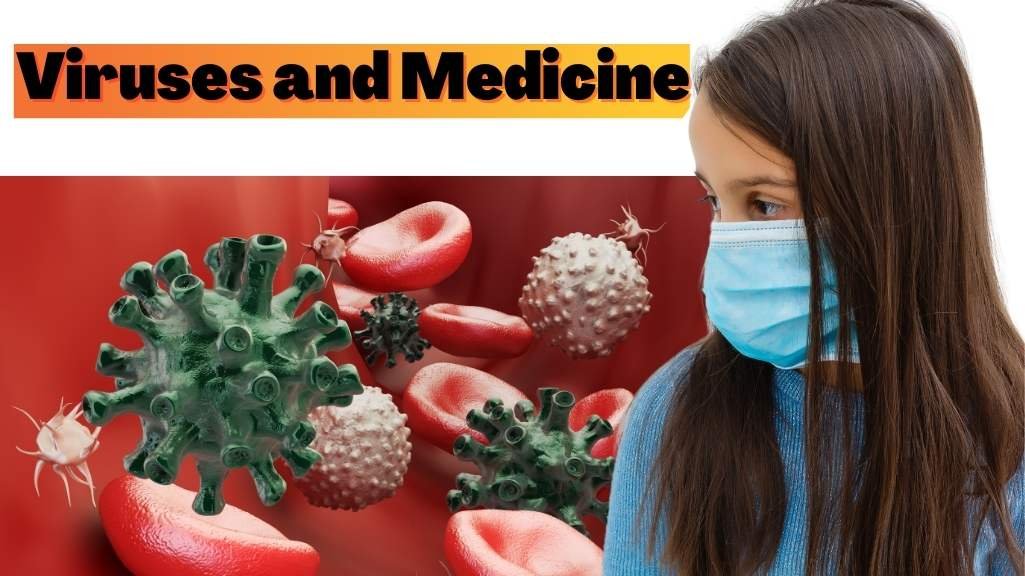Viruses and Medicine: Beneficial to Both People and Plants
Steffan Addison
. 3 min read
Viruses are simple systems that can be manipulated in order to be beneficial and useful for a wide variety of purposes across a variety of domains. Viruses are capable of causing debilitating diseases in a number of different organisms. Because of their ability to target specific cells, viruses have been utilized in medicine for quite some time in the production of vaccines. More recently, viruses have been put to use as vectors to transport materials for the treatment of diseases such as cancer. In the field of agriculture, researchers are looking into the possibility of using viruses to confer resistance in plants to biotic and abiotic stresses through the introduction of desirable characteristics.

Harnessing the Power of Viruses: How HMS Researchers are Utilizing Viruses for Medical Advancements
At the same time that researchers and medical professionals from across the HMS community investigate potential countermeasures to the viruses that cause illness, other HMS members are discovering and utilizing the positive potential of viruses. Some people are able to do both, such as Connie Cepko, who is a professor at HMS who specializes in genetics and neuroscience at the Blavatnik Institute. Cepko is quoted as saying, "We love viruses for all of our work." Her research team has developed virus-based tools that can map neural circuits, improve vision in mouse models of inherited blindness, and test for SARS-CoV-2.
Using Viral Vectors in Genetic Research: The Role of Altered Viruses in Gene Transfer
In order to introduce genes into cells that they are researching, geneticists frequently make use of viruses as vectors. A viral vector is a tool that is frequently utilized by molecular biologists for the purpose of inserting genetic material into cells. The virus is altered in such a way that it will no longer cause disease and will only infect specific kinds of cells in order for it to serve its purpose as a viral vector. It is common practice to employ phages as vectors in the process of genetically modifying bacteria. In a manner not dissimilar, viral therapy makes use of viruses to bring about genetic modification in diseased cells and tissues. The use of viral therapy as a potential approach to cancer treatment and gene therapy holds a lot of promise.
The Rise of Phage Therapy: Using Bacteriophages to Treat Antibiotic-Resistant Infection
As the prevalence of infections that are resistant to multiple drugs increases, there has been a resurgence in interest in phages. Recently, phages were successfully used to treat a serious infection that had been resistant to antibiotics in a young person in the United Kingdom who was reportedly on the verge of dying when the infection was discovered. Phages are created through genetic engineering in today's world. Phages are separated into their individual strains and put through tests to determine which ones are most effective against the target bacteria. The most successful strains are then purified into a highly concentrated form.
Surviving the Heat: The Symbiotic Relationship of Plants, Fungi, and Viruses in Yellowstone's Geyser Basins
In Yellowstone National Park, there are a few plants that can be found growing in the hot soils that surround the geysers and the "Artists' Paintpots." One example of this kind of plant is a tropical panic grass that is part of a symbiotic relationship with a fungus that colonizes the plant and a virus that infects the fungus. Together, these organisms form a single organism. It is impossible to survive in soils hotter than 122 degrees Fahrenheit without any of the three components that make up this symbiotic relationship.
Exploring the Hidden World of Beneficial Viruses in the Human Microbiome
The development of modern technology has made it possible for us to gain a deeper comprehension of the intricate workings of the microbial communities that reside within the human body. We now know that in addition to beneficial bacteria, there are also beneficial viruses that can be found in the gut, the skin, and even the blood. Our knowledge of this viral component is still, for the most part, in its infant stages. However, it has a significant potential for elucidating viral infections and, more importantly, how to defend ourselves against the harmful ones. It may also shed light on the development of gene therapies, genetic diseases, and the history of human genome evolution.
More Stories from
The Versatile Guava: A Fruit with a Multitude of Uses
From its delightful taste in culinary creations to its potent health benefits and skincare properties, guava has become a beloved fruit worldwide.
Cardiac Arrest: Understanding and Managing a Life-Threatening Emergency
Cardiac arrest is a life-threatening emergency that requires immediate medical attention. This article provides a concise guide on how to respond effectively to cardiac arrest situations.
Advancements in Medical Technology: Improving Healthcare Access
Embrace the future of healthcare with these advancements, fostering a more inclusive and accessible healthcare system for all.
Cognitive Enhancers: The Ethics and Implications of Brain-Boosting Drugs
Explore the ethics and implications of cognitive enhancers, also known as "smart drugs," that promise improved cognitive abilities.
The Role of an Orthopedic Surgeon in Modern Medicine
This article provides an insightful overview of orthopedic surgeons and their significant contributions to modern medicine.










.png?width=40&aspect_ratio=1:1)

